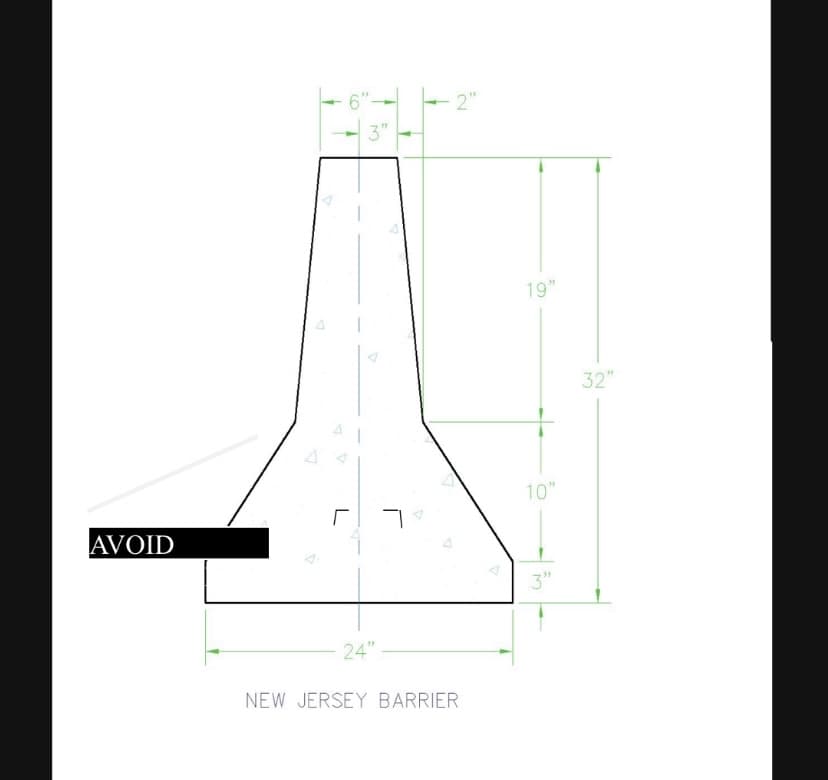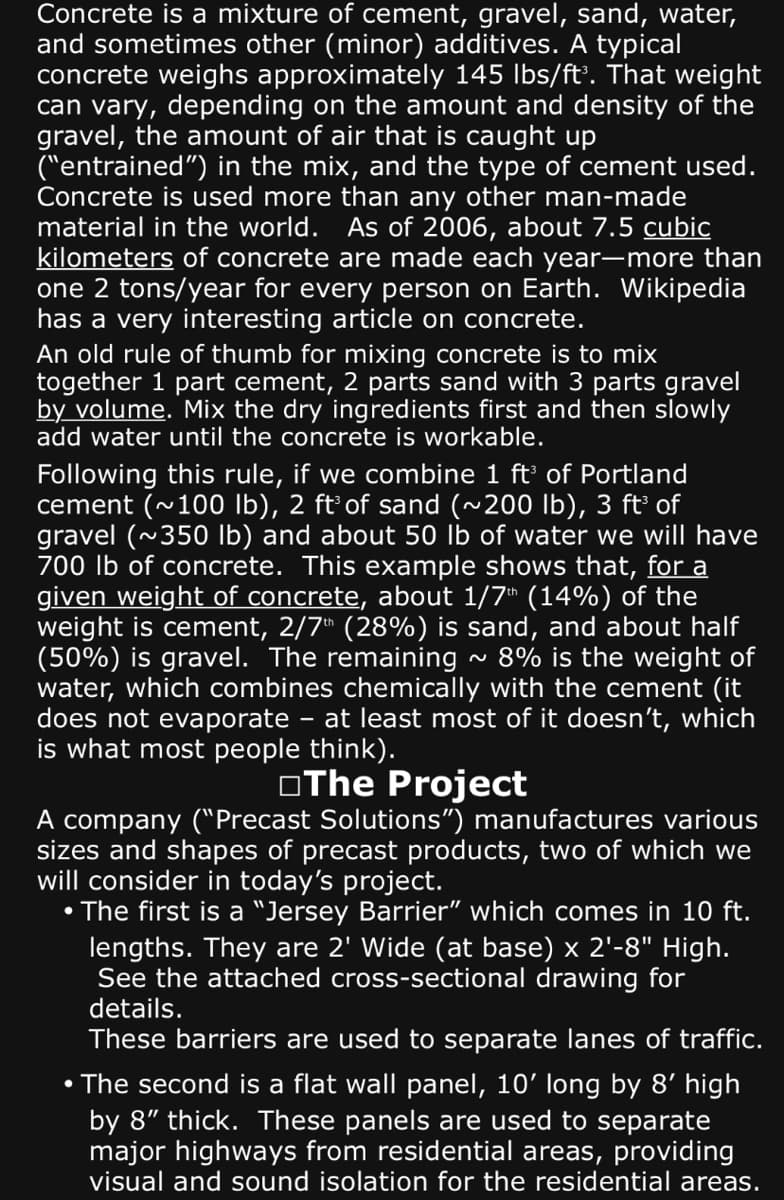What formula can I use to find the weight of the barrier
Chapter2: Loads On Structures
Section: Chapter Questions
Problem 1P
Related questions
Question
What formula can I use to find the weight of the barrier?

Transcribed Image Text:AVOID
3"
24"
1
7
1
-2"
NEW JERSEY BARRIER
19"
10"
3"
32"

Transcribed Image Text:Concrete is a mixture of cement, gravel, sand, water,
and sometimes other (minor) additives. A typical
concrete weighs approximately 145 lbs/ft³. That weight
can vary, depending on the amount and density of the
gravel, the amount of air that is caught up
("entrained") in the mix, and the type of cement used.
Concrete is used more than any other man-made
material in the world. As of 2006, about 7.5 cubic
kilometers of concrete are made each year-more than
one 2 tons/year for every person on Earth. Wikipedia
has a very interesting article on concrete.
An old rule of thumb for mixing concrete is to mix
together 1 part cement, 2 parts sand with 3 parts gravel
by volume. Mix the dry ingredients first and then slowly
add water until the concrete is workable.
Following this rule, if we combine 1 ft³ of Portland
cement (~100 lb), 2 ft³ of sand (~200 lb), 3 ft³ of
gravel (~350 lb) and about 50 lb of water we will have
700 lb of concrete. This example shows that, for a
given weight of concrete, about 1/7th (14%) of the
weight is cement, 2/7th (28%) is sand, and about half
(50%) is gravel. The remaining 8% is the weight of
water, which combines chemically with the cement (it
does not evaporate at least most of it doesn't, which
is what most people think).
The Project
-
~
A company ("Precast Solutions") manufactures various
sizes and shapes of precast products, two of which we
will consider in today's project.
• The first is a "Jersey Barrier" which comes in 10 ft.
lengths. They are 2' Wide (at base) x 2¹-8" High.
See the attached cross-sectional drawing for
details.
These barriers are used to separate lanes of traffic.
• The second is a flat wall panel, 10' long by 8' high
by 8" thick. These panels are used to separate
major highways from residential areas, providing
visual and sound isolation for the residential areas.
Expert Solution
This question has been solved!
Explore an expertly crafted, step-by-step solution for a thorough understanding of key concepts.
Step by step
Solved in 2 steps with 2 images

Knowledge Booster
Learn more about
Need a deep-dive on the concept behind this application? Look no further. Learn more about this topic, civil-engineering and related others by exploring similar questions and additional content below.Recommended textbooks for you


Structural Analysis (10th Edition)
Civil Engineering
ISBN:
9780134610672
Author:
Russell C. Hibbeler
Publisher:
PEARSON

Principles of Foundation Engineering (MindTap Cou…
Civil Engineering
ISBN:
9781337705028
Author:
Braja M. Das, Nagaratnam Sivakugan
Publisher:
Cengage Learning


Structural Analysis (10th Edition)
Civil Engineering
ISBN:
9780134610672
Author:
Russell C. Hibbeler
Publisher:
PEARSON

Principles of Foundation Engineering (MindTap Cou…
Civil Engineering
ISBN:
9781337705028
Author:
Braja M. Das, Nagaratnam Sivakugan
Publisher:
Cengage Learning

Fundamentals of Structural Analysis
Civil Engineering
ISBN:
9780073398006
Author:
Kenneth M. Leet Emeritus, Chia-Ming Uang, Joel Lanning
Publisher:
McGraw-Hill Education


Traffic and Highway Engineering
Civil Engineering
ISBN:
9781305156241
Author:
Garber, Nicholas J.
Publisher:
Cengage Learning